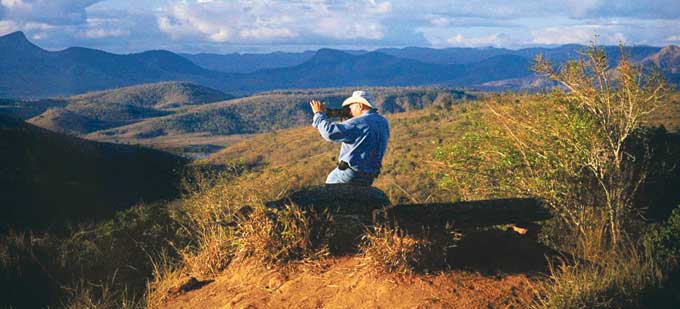The Salt of the Earth
by Jordan Canahai

Although most acclaimed as the director of such classic films as Paris, Texas and Wings of Desire, German filmmaker Wim Wenders, like his contemporary Werner Herzog, has also staked out an impressive body of work as a documentarian, focusing particularly on other artists equally concerned with the transcendent as he is. His latest documentary The Salt of the Earth, which he co-directed with his subject’s son Juliano Ribeiro Salgado, chronicles the life and career of Brazilian social documentary photographer and photojournalist Sebastiao Salgado, who left a high paying job as an economist for the World Bank in 1973 to pursue his passion for photography. Since then he’s told the story of Earth and our species with his camera, capturing both the natural world in all its splendor and human beings pushed to the harshest extremes.
One of the simple but essential techniques Wenders employs through his documentary which makes it so successful is to project Salgado’s photos against a mirror that reflects back to him as the photographer discusses his work, allowing us greater insight into the subject in ways wholly unique to cinema. Wenders’ stark black-and-white photography during these moments recall not only the style of his subject but also the beautiful cinematography of Wings of Desire. Whether Salgado was photographing hundreds of muddied workers toiling away in the massive goldmines of Sierra Pelada, the burning oil fields of Kuwait in the wake of Desert Storm, or the misery that famine and genocide had wrought on the respective people of Ethiopia and Rwanda, his breathtaking images posses startling power.
Along with those scenes, The Salt of the Earth takes the conventional form of a documentary profile, detailing Salgado’s biography along with contemporary footage of the man at work. After bearing witness to as much suffering and horror as Salgado had throughout his career (“seeing into the heart of darkness” as Wenders puts it), he went into a deep depression following the events he captured in Rwanda in 1994, fearing he lost faith in the ultimate goodness of humanity (one can imagine him feeling as emotionally lost and aimless as the protagonist of Paris, Texas). It was only upon returning to his home in Brazil and with the support of his wife, Lelia, that he began focusing his attention on restoring and conserving the Rainforest and documenting the indigenous people of his homeland. With Genesis, his first book made up of landscape and nature photographs, Salgado made an unlikely late-career transition from being a social photojournalist to a nature photographer, while gaining a newfound appreciation for the beauty of life in the process.
More than a photojournalist, The Salt of the Earth makes it clear that Salgado was and is an artist and storyteller—one whose worldview has been both observed and informed by his camera lens. The stories he’s told through his photographs over the years reflect the evolving consciousness of a soul who has been all over the world and witnessed humanity at its best and worst. Taken as a whole, Salgado’s photographs reflect the scope and perspective of the human experience in all its beautiful and terrifying complexities. Though the documentary does skirt over the difficult moral and ethical charges that have been leveled against Salgado by his critics over the years, Wenders and the younger Salgado are clearly not concerned with such discussions. Rather, The Salt of the Earth stands a visually gorgeous and emotionally affecting tribute that captures the soul of a man who captured so many others through his images.
Watch the trailer for The Salt of the Earth
|
Issue Navigation> Issue Index > v14n17 (Week of Thursday, April 30) > The Salt of the Earth This Week's Issue • Artvoice Daily • Artvoice TV • Events Calendar • Classifieds |









 Current Issue
Current Issue